If you’ve ever dropped a line and pulled up something that looked like a diamond in the rough, you’ve probably caught a Triggerfish. Oblong, flat, and pucker-lipped, they look so compressed they may as well travel at bullet speed. But there’s more to Triggerfish fishing than meets the eye. These are some of the tastiest tidbits in the sea, said to rival Snapper and Grouper. That makes them high caliber indeed.
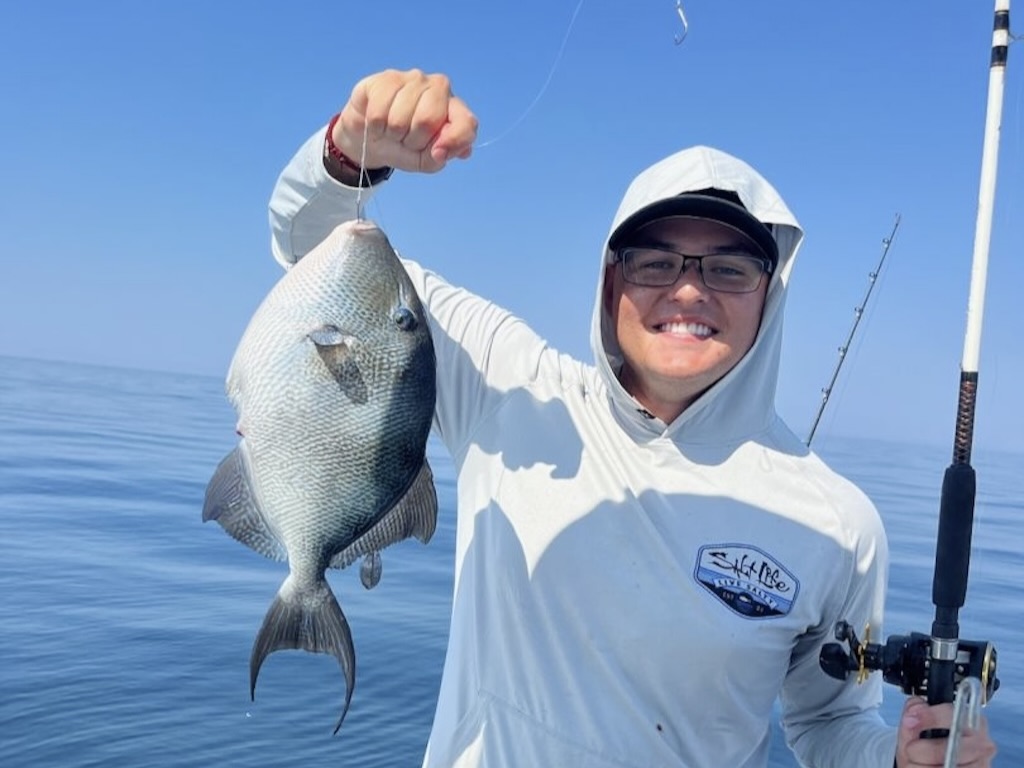
Dare we say, catching your own Triggerfish is a real “bullseye.” But dropping lines hundreds of feet below can feel a bit like playing Russian roulette. So, let’s dive down to the reef and see what it takes to hit your mark.
How to Identify Triggerfish
There are over 40 types of Triggerfish around the world. Known for their unusual shape and striking colors, people come to admire many of them while snorkeling. But many species are frequently hooked by anglers and have earned their place – like other reef fish – as coveted table fare.
You can recognize any Triggerfish at a glance. Their blimp-like bodies are rounded and flat from the side, while their tails stream behind them like a bracket. The feature they’re best known for, however, is their namesake dorsal fin. When extended, the first spine locks into place, while the second spine acts like a release lever. Pull that trigger, and the first spine unlocks from the upright position, allowing the fin to fold down again. This nifty little safety lock allows them to anchor into tight crevices where predators can’t reach them.
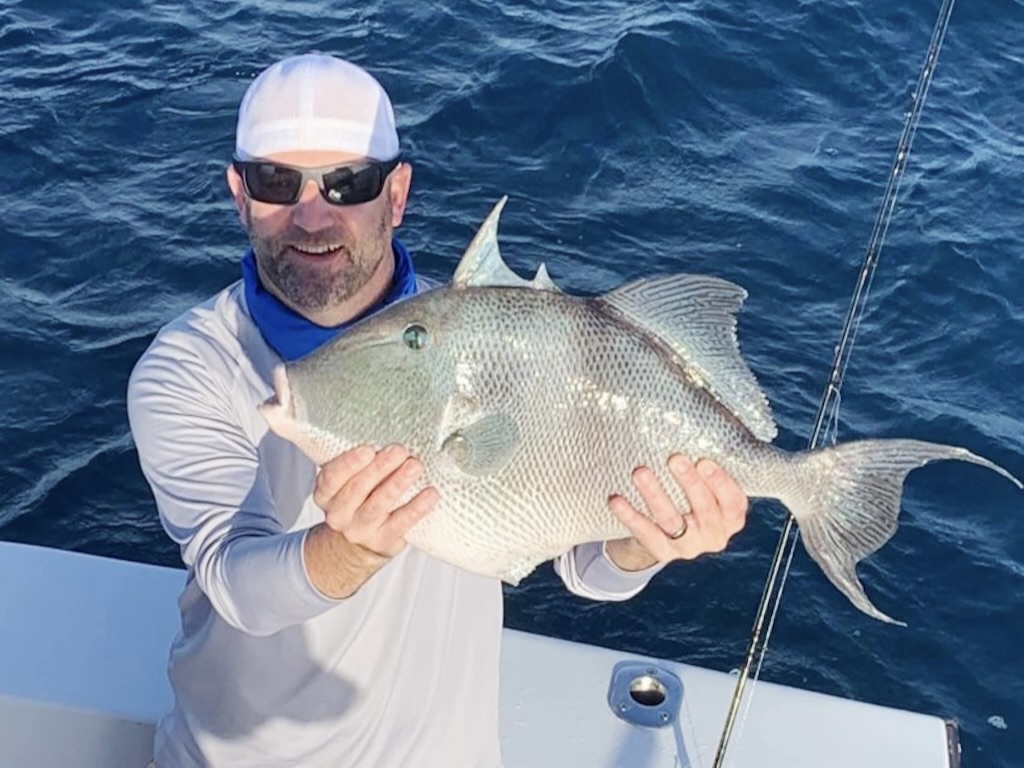
When it comes to American Triggerfish, you might catch a handful of species while reef fishing. But one stands out above the rest: Gray Triggerfish (Balistes capriscus). This Atlantic species swims throughout the Gulf of America and up to the Carolinas, and is especially popular in Florida. You’ve got a pretty good chance of catching them whenever you fish deep enough structure such as reefs, wrecks, ledges, and rocky bottoms.
Other popular species include:
- Queen Triggerfish (Balistes vetula). A striking variety that swims in the Caribbean and parts of Florida. You can recognize Queen Triggerfish by the electric blue line running across their snout like a mustache.
- Ocean Triggerfish (Canthidermis sufflamen). These Trigs inhabit a similar range to Gray Triggerfish in the Atlantic, but you’ll find them much deeper. They usually live over drop-offs and reefs anywhere between 35 and 100 feet down.
- Reef Triggerfish (Rhinecanthus rectangulus), also known by the Hawaiian tongue-twister Humuhumunukunukuāpuaʻa. These dazzling fish with stripes of yellow, blue, white, and black are Hawaii’s official state fish. They’re a magnificent sight to see while snorkeling, but not a fish you’re likely to target for sport.
- Black Triggerfish (Melichthys niger), aka Black Durgon. Another species native to Hawaii, Polynesia, and as far afield as the Indian Ocean. These striking black Triggerfish look almost like shadows on the reef until you draw close enough to see the white lines hugging their silhouettes.
Compared to all these, muted Gray Triggerfish look rather “meh.” Their color varies from olive or gray to brown, with small blue and green highlights on their fins. Although when spawning, they may change color. This is when males turn a dark charcoal hue while females don a black-and-white pattern.
What Gray Triggerfish lack in appearance, they make up for with a surprising amount of fighting power – not to mention that sweet, tender fillet! Most measure 14–18 inches and weigh just 2–4 pounds. Anything over 10 pounds is a serious trophy.
Best Triggerfish Fishing Spots
Feeling trigger-happy? The good news is, there are plenty of places to go fishing for Triggerfish. Here are our top picks, where you’re almost guaranteed to put a few in the chamber. Be sure to warm up that forearm before you fire away!
Florida

Florida is the undisputed capital of Triggerfish fishing, particularly along the Gulf coast. This area’s abundance of artificial reefs, wrecks, and natural ledges creates the perfect Triggerfish habitat. You can expect consistent action each year out of Destin, Panama City Beach, and Pensacola.
The Atlantic side is a close second. From Jacksonville down to the Keys, you can target Trigs along reef lines in 60–120 feet of water.
Florida’s Gulf season for Gray Triggerfish is typically open from March through May and again from August through December. There are strict bag limits – usually one fish per angler, with a 15-inch minimum fork length. In the Atlantic, you can keep as many as 10 fish per person with a 12-inch minimum. Just be aware that closures on the Atlantic side are common to help populations recover.
Alabama

Venturing deeper into the Gulf of America, Alabama is yet another hotspot for Triggerfish. In fact, these waters are home to some of the largest Gray Triggerfish ever recorded. Orange Beach and Gulf Shores are prime departure points for charters that head offshore to artificial reefs and wrecks.
Size and bag limits for Gray Triggerfish in Alabama state waters reflect federal regulations. That means one fish per person and a minimum fork length of 15 inches. The fishing season closes in January and February, as well as June and July. Keep an eye on the latest updates as fishing may close when quotas are met early.
Texas

We all know that Texas is famous for bringing out the big guns – only you’ll be pulling Triggers of a different kind, this time! Here, Triggerfish cozy up to oil rigs as well as the usual reefs and wrecks, often mixing with Red Snapper. Talk about fishing for dinner!
Galveston, Port Aransas, and South Padre Island are top launching points for deep sea charters. As in other areas, triggerfishing is typically best from late spring into early fall.
Texas follows the same federal size limits as Alabama, but in state waters, they’re much more generous. You can keep up to 20 Triggerfish, as long as they measure at least 16 inches.
South Carolina
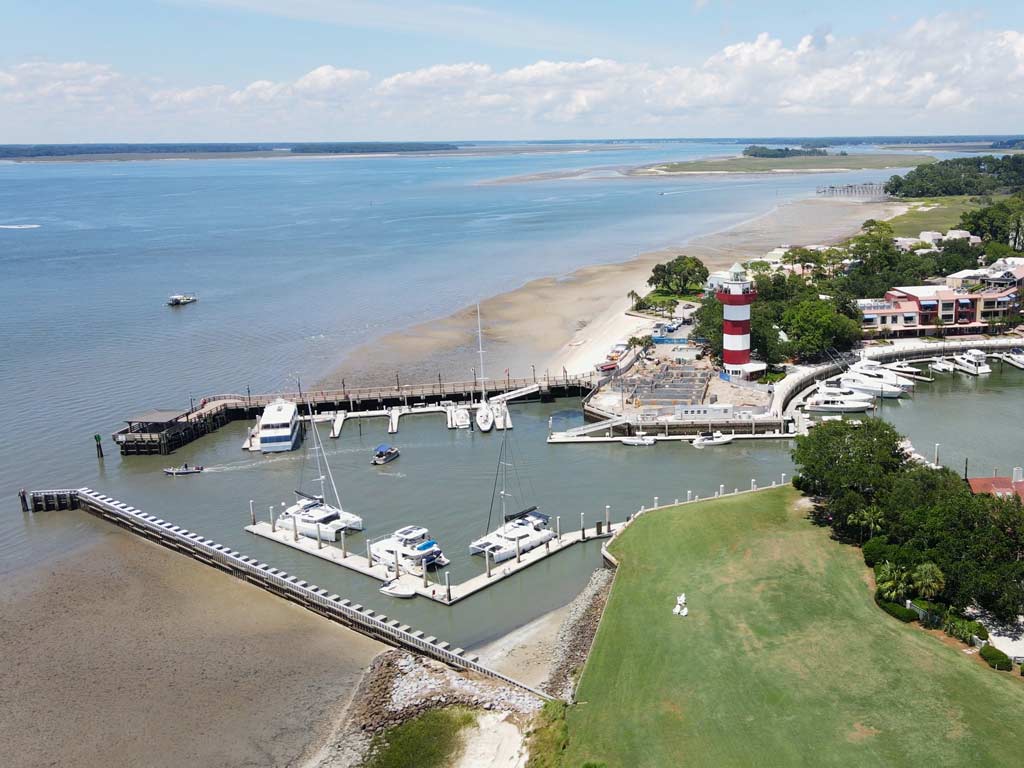
Rest assured, there’s plenty of Triggerfish action on the East Coast, too. And South Carolina is a great place to jump into the crossfire! From Charleston to Hilton Head, the continental shelf is dotted with wrecks, reefs, and ledges that hold big schools of Trigs. The Charleston Bump is an especially productive offshore fishing spot that you’ll hear reference to around here.
Yet again, peak season runs from late spring through early fall, when Triggerfish school up around structure in 60–180 feet of water. South Carolina follows federal regulations laid out by the South Atlantic Fishery Management Council. Currently, these regulations allow you to keep 10 Triggerfish per day with a minimum fork length of 12 inches.
North Carolina

Dropping a line in North Carolina will also trigger some decent action for you. The Outer Banks and Cape Lookout are famous for their steep ledges and shipwrecks. These may spell doom for sailors, but they make cozy quarters for bottom fish – including, of course, our favorite little reef pistols.
Summer sees Triggerfish firing on all cylinders up here, so time your trip right! As a bonus, you may even hook Grouper, Snapper, Amberjack, and more. SAFMC regulations apply.
How to Fish for Triggerfish

Woo-hoo, you’re raring to go! But don’t waltz in guns blazing just yet. Triggerfish are finicky little things, and catching them takes a bit of finesse.
The most popular way to target them is bottom fishing. Drop your baited rig near reefs, wrecks, or hard-bottom areas, and… Hold your fire! Triggerfish rarely smash a bait in one go. Instead, they’ll peck with their tiny little teeth until they get a good hold. That’s your cue to pull the trigger – which is to say, set the hook with a short, sharp motion.
Light to medium spinning or conventional tackle works best, since you’ll often be fishing in 60–200 feet of water. Keep in mind that Triggerfish have tough mouths, so smaller, sharp hooks are a must. Use baits that they’d normally nibble on, like crustaceans, mollusks, and small invertebrates.
Some anglers even chum lightly around reefs to get Triggerfish fired up before dropping their lines. Once one fish bites, chances are there are plenty more, and you’ll be met with some rapid fire!
Triggerfish Fishing Gear & Bait
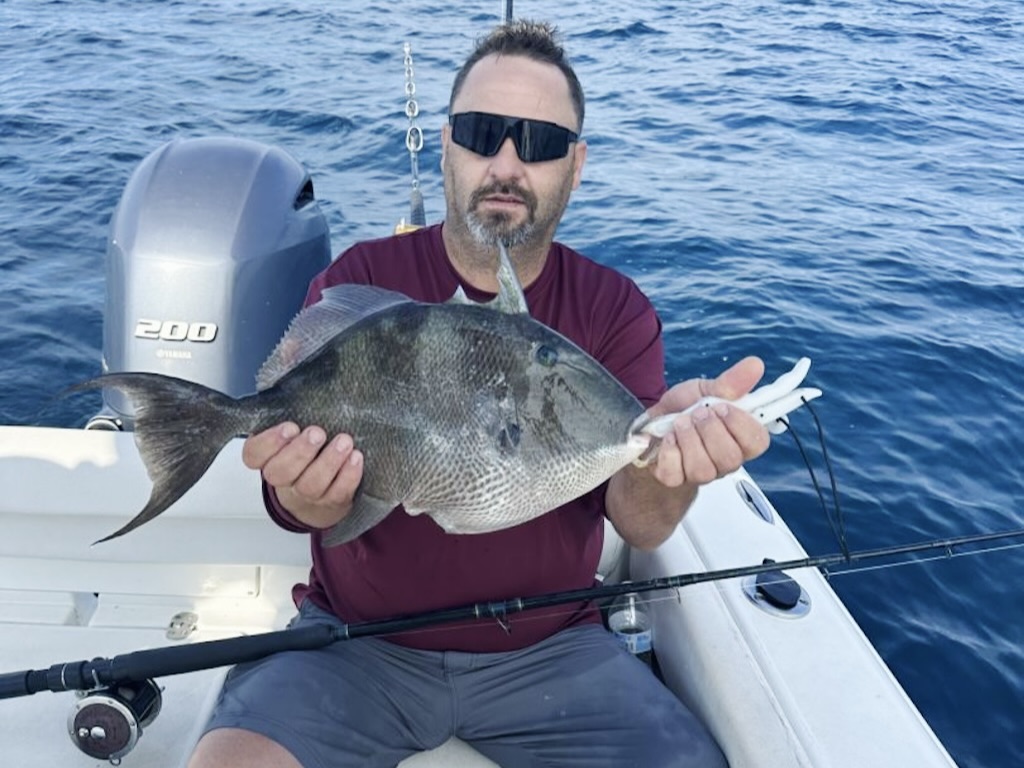
Here’s the most effective gear for catching Triggerfish so you can come locked and loaded:
- Rods and Reels. We recommend a medium-action spinning or conventional rod paired with a reel that can handle 20–30 lb test line. Compact setups make it easier to feel those light nibbles.
- Line and Leaders. Braided mainline is popular because its low elasticity helps you detect the subtle bites. A 20–30 lb fluorocarbon leader adds abrasion resistance against reef structure.
- Hooks. Small, strong hooks are key to penetrating a Trigger’s tough jaw. Circle or J hooks in size #2 to 2/0 are perfect.
- Rigs. The classic chicken rig (dropper loop rig) or a two-hook bottom rig works wonders. Some anglers also use Carolina rigs in lighter structure. Just be sure to keep your sinker heavy enough to stay in place on the bottom.
- Bait. Crustaceans and shellfish are staples of the Triggerfish diet (how do you think they got such tough jaws?). Top choices include squid strips, cut shrimp, clams, or small pieces of crab. Fresh bait outfishes frozen almost every time, but some anglers swear by small strips of cut fish.
When to Fish for Triggerfish
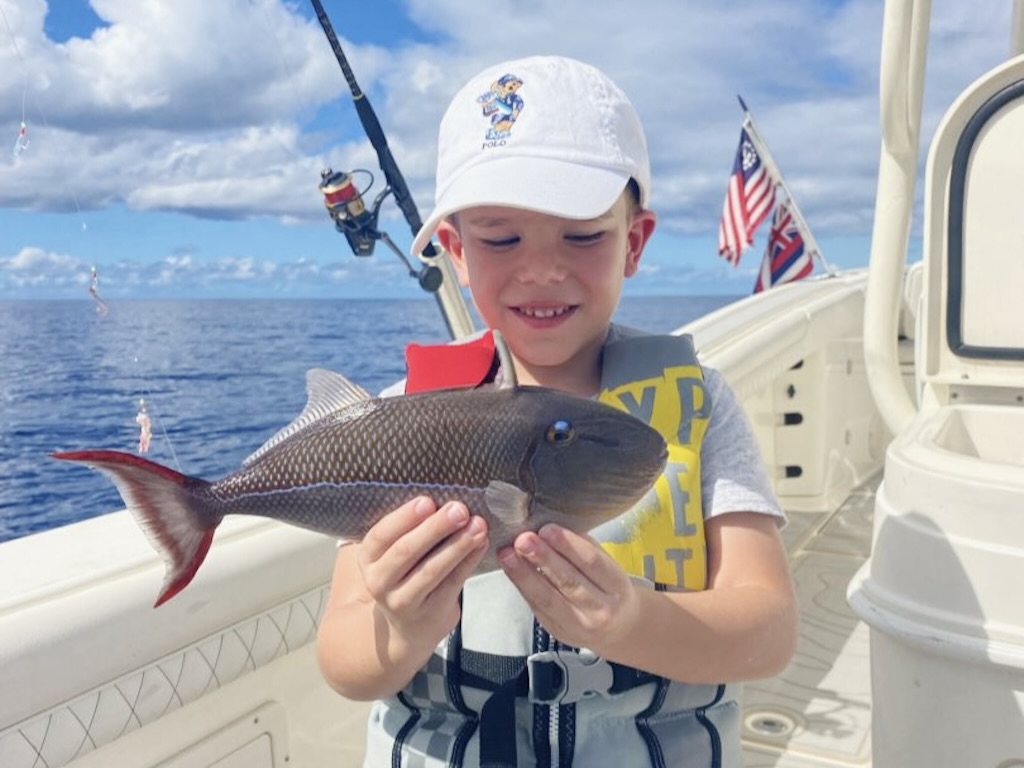
The best time to target Gray Triggerfish depends on where you’re fishing. In general, warmer months bring the best numbers, as Trigs school up around structure to spawn and feed aggressively. But you’ll need to time your trip around local regulations.
In the Gulf of America, the season usually opens from March through May and between August and December. Note that harvest is often closed in June and July. In the Atlantic, seasons vary and can change year to year depending on stock assessments. Always check local regulations before heading out.
Triggerfish FAQs: All You Need to Know
Triggerfish: Bottom Fishing with a Bang!
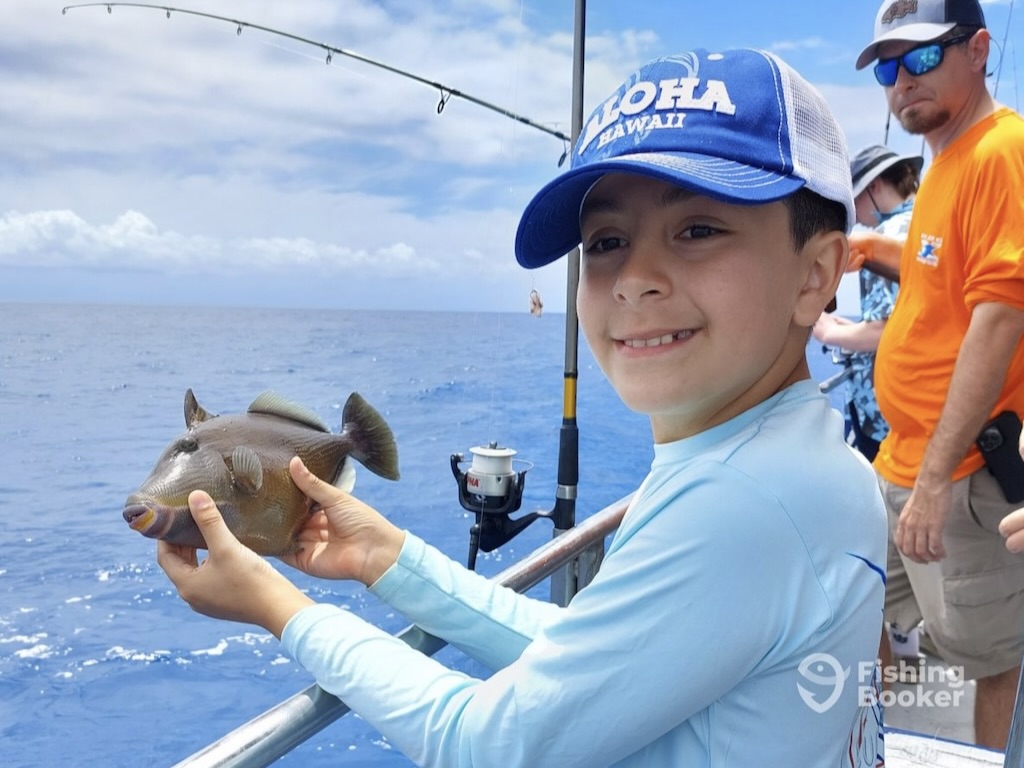
Triggerfish may not be your biggest prize from the reef, but they’re certainly one of the most unusual. One bite, and they’re sure to become a top target any time you find yourself bottom fishing. After all, it’s not every day that you can say your fishing trip ended with a bang.
Our advice? Go on and give it a shot. You might just fall in love with Triggerfish fishing – lock, stock, and barrel.
Have you ever pulled a Triggerfish from the water? How did you end up cooking it? Fire away in the comments below and share your stories!
